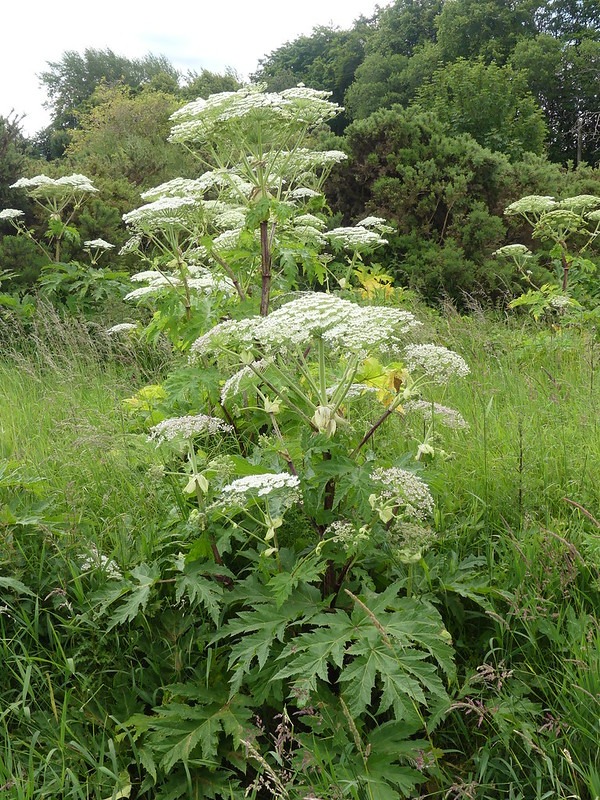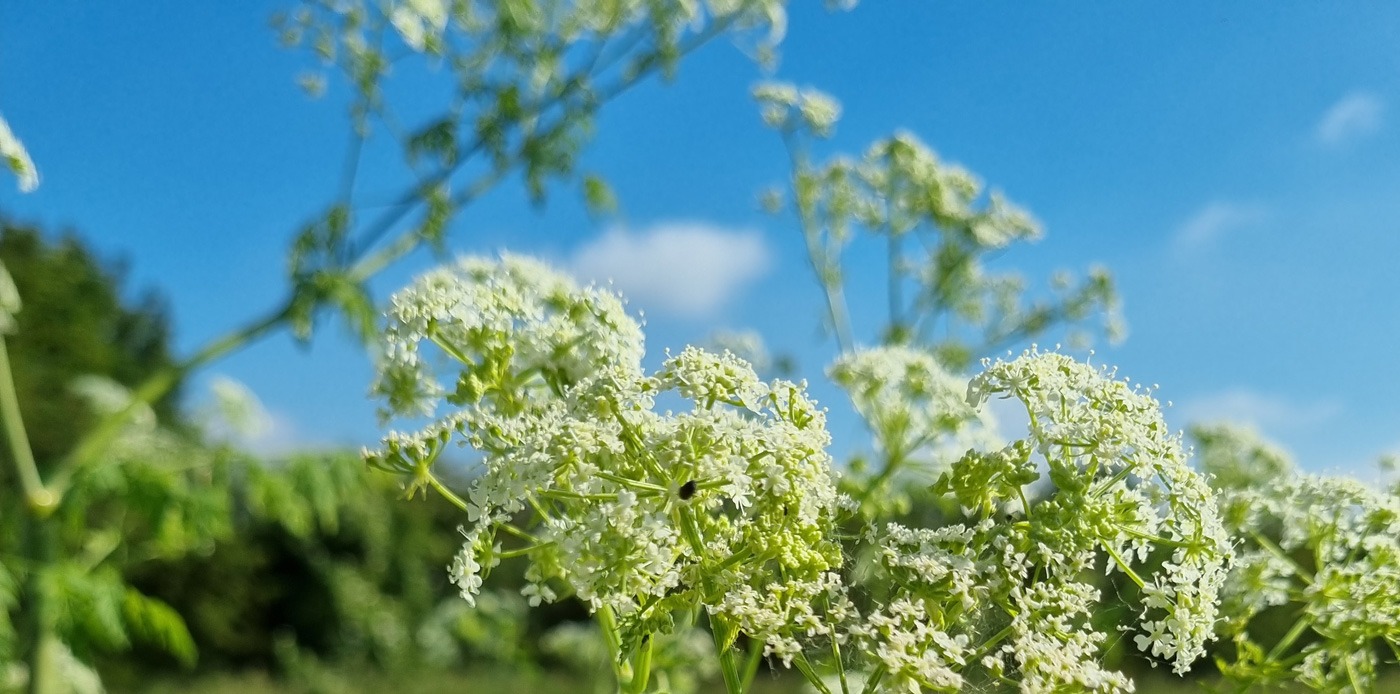The guide to where Giant Hogweed grows in the United Kingdom
Welcome, fellow homeowners and garden enthusiasts! If you’ve stumbled upon this blog post, chances are you’re either looking to sell your property or simply curious about the notorious Giant Hogweed. Whatever the case may be, you’ve come to the right place. In this comprehensive guide, we will delve into the whereabouts of Giant Hogweed in the United Kingdom, shedding light on its invasive nature and offering tips on effective control methods.
Giant Hogweed (Heracleum mantegazzianum) is a towering and imposing plant that has become a growing concern across the UK. Originally hailing from the Caucasus Mountains in Central Asia, it was introduced to Britain as an ornamental plant during the 19th century. Unfortunately, this striking botanical beauty has now become a serious threat to both human health and local ecosystems.
Where Giant Hogweed Grows in the UK
The spread of Giant Hogweed has been propelled by its remarkable adaptability to various habitats. This invasive weed displays a remarkable resilience and can thrive in a wide range of environments within the United Kingdom. Understanding the preferred growing conditions of Giant Hogweed is crucial in identifying potential infestation areas and implementing effective control strategies.
Giant Hogweed tends to favour damp environments, making it a common sight along riverbanks and streams. The plant’s deep roots allow it to access moisture and nutrients, making these areas ideal for its growth. Woodland edges, where sunlight filters through the canopy, provide another favourable habitat for Giant Hogweed. It takes advantage of the moisture retained in the soil while benefiting from the sunlight it requires for robust growth.
In addition to riverbanks and woodland edges, Giant Hogweed can also be found in meadows and other open grassy areas. These locations often provide the necessary moisture and nutrient-rich soil that supports its growth. Such habitats can range from open fields to parks and even residential gardens.

However, Giant Hogweed does not limit itself to natural environments alone. It is known to thrive in disturbed areas such as roadsides, railway tracks, and construction sites. These sites often offer a combination of disturbed soil, ample sunlight, and access to water, making them prime locations for the plant to establish and spread.
Environment and Light Conditions
When it comes to light conditions, Giant Hogweed has a preference for areas that receive plenty of sunlight. It can tolerate some shade, but its growth and spread are most prolific in sunny locations. The availability of sunlight enables the plant to carry out photosynthesis efficiently, promoting its overall vigour and size. As a result, Giant Hogweed can often be found in open, sunny areas with a good supply of moisture.
It’s important to note that while Giant Hogweed thrives in these environments, it is also capable of colonising and adapting to other habitats. As an invasive species, it has proven its ability to outcompete native plants and establish itself in diverse locations across the UK.
By understanding where Giant Hogweed tends to grow, homeowners can be better prepared to identify potential infestations on their properties. Vigilance in monitoring these areas and taking prompt action when necessary is crucial to prevent its spread and mitigate the associated risks.
Phototoxicity of Giant Hogweed
The presence of Giant Hogweed in your vicinity can have detrimental consequences for both your property’s value and the well-being of those who come into contact with it. The plant’s sap contains phototoxic compounds called furanocoumarins, which can cause severe burns and blistering when exposed to sunlight. These injuries can be incredibly painful and may leave long-lasting scars. In extreme cases, the sap can even lead to temporary or permanent blindness if it comes into contact with the eyes.
Inspection and safety when dealing with Giant Hogweed
To ensure the safety of your family and potential buyers, it is crucial to identify areas where Giant Hogweed may be lurking. While it has spread across the UK, there are certain regions where it has become more prevalent. Scotland, northern England, Wales, and parts of the Midlands have reported higher instances of infestations. However, it’s important to note that Giant Hogweed can be found in isolated pockets across the country, so it’s worth familiarising yourself with the plant regardless of your location.
When inspecting your property, keep an eye out for plants that tower above the rest, reaching heights of up to five metres (16 feet) with large, umbrella-shaped flower clusters. The stems of Giant Hogweed are stout, hollow, and covered in reddish-purple blotches, while its leaves are deeply incised and can span up to 1.5 metres (5 feet) in diameter. Identifying these characteristic features will help you spot potential Giant Hogweed plants and take necessary action promptly.
Giant Hogweed in the United Kingdom: Stay informed and proactive
In this comprehensive guide we have highlighted valuable insights into the whereabouts of Giant Hogweed in the United Kingdom, as well as the importance of understanding its preferred habitats. We have explored how this invasive weed thrives in damp environments such as riverbanks, woodland edges, meadows, and disturbed areas like roadsides. Its adaptability to various habitats and preference for areas with rich, moist soil and ample sunlight have contributed to its widespread presence.
We have also emphasised the risks associated with Giant Hogweed, particularly its phototoxic sap that can cause severe burns and blisters upon contact with sunlight. The potential harm to human health and the negative impact on property values make it crucial for homeowners to be vigilant in identifying and managing Giant Hogweed infestations.
Conclusion
To effectively control Giant Hogweed, homeowners should familiarise themselves with its characteristics for accurate identification. Taking necessary preventive measures, such as wearing protective clothing and gloves, can reduce the risk of sap exposure. When addressing an infestation, seeking professional help or following best practice guidelines from trusted resources is highly recommended.
Remember, tackling Giant Hogweed requires ongoing effort and a commitment to preventing its spread. Regular inspections, prompt removal, and reporting infestations to relevant authorities are essential steps in safeguarding your property and the local environment.
By staying informed and proactive, you can play a vital role in managing this invasive weed. Take action, protect your loved ones and potential buyers, and contribute to the preservation of the natural beauty of the United Kingdom. Together, we can control the spread of Giant Hogweed and maintain healthier and safer communities.
Resources
Resources for homeowners in the UK regarding Giant Hogweed:
Title: “Giant Hogweed: Best Practice Management and Control Guidelines”
URL: https://www.rhs.org.uk/advice/profile?PID=497
This resource from the Royal Horticultural Society (RHS) offers comprehensive guidelines on the management and control of Giant Hogweed. It covers topics such as identification, health risks, legal obligations, and effective control methods.
Title: “Giant Hogweed: A Guide for Homeowners”
URL: https://www.gov.uk/guidance/giant-hogweed-a-guide-for-homeowners
The UK government provides this informative guide specifically tailored to homeowners. It includes information on identifying Giant Hogweed, the potential risks, legal responsibilities, and steps to take for effective control and removal.
Title: “Invasive Species: Giant Hogweed”
URL: https://www.nonnativespecies.org/factsheet/factsheet.cfm?speciesId=2377
The Non-native Species Secretariat provides this factsheet dedicated to Giant Hogweed. It covers key information about the plant, its impacts, and management strategies. The resource also provides links to additional guidance and support.
Title: “Giant Hogweed Control”
The Woodland Trust offers valuable insights on Giant Hogweed control. This resource provides practical advice on identification, management techniques, and reporting infestations. It also highlights the importance of protecting native flora and fauna.
Title: “Giant Hogweed: A Guide to Identification and Control”
NatureScot (formerly Scottish Natural Heritage) presents this guide specifically focused on Giant Hogweed identification and control. It includes detailed information on its characteristics, the risks it poses, legal obligations, and effective control measures.
Remember to always consult local authorities or professionals for specific advice tailored to your region.
The Postcode Areas We Serve
Gloucester and Swindon
Birmingham and the Midlands
Bristol and the South West
Cardiff and South Wales










